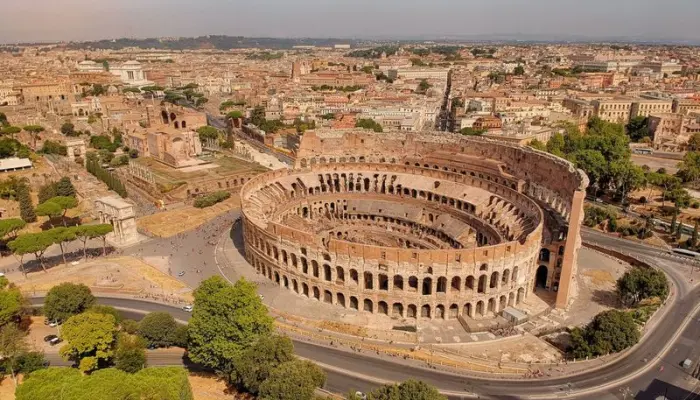Located in the heart of the Eternal City, the Colosseum stands as one of the most recognizable symbols of Rome and Italy. This majestic structure, built nearly 2000 years ago, captivates with its monumental scale and historical significance.
History of Construction and Purpose of the Colosseum
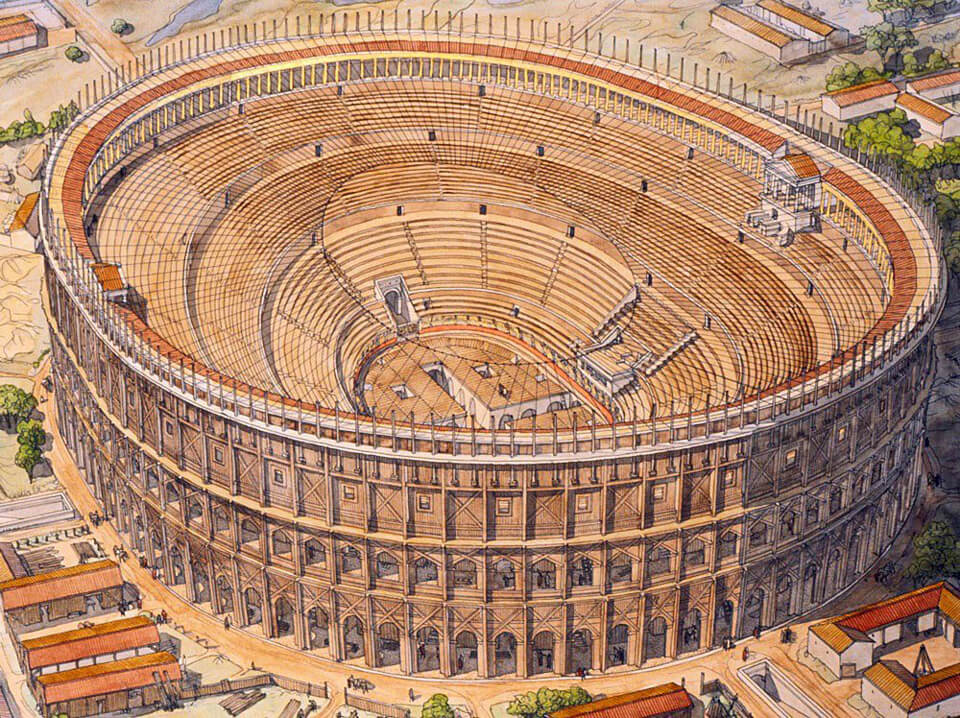
The Colosseum, also known as the Flavian Amphitheatre, was erected in the 1st century AD by order of Emperor Vespasian of the Flavian dynasty. The construction lasted about ten years and was completed under the reign of his son Titus in 80 AD.
The Colosseum was intended for gladiatorial combats, wild animal hunts, and other mass spectacles, which were an important part of Roman culture at that time. Its impressive dimensions (about 50 meters high and 187 meters in elliptical arena length) could accommodate up to 50,000 spectators.
Architectural Features and Building Materials
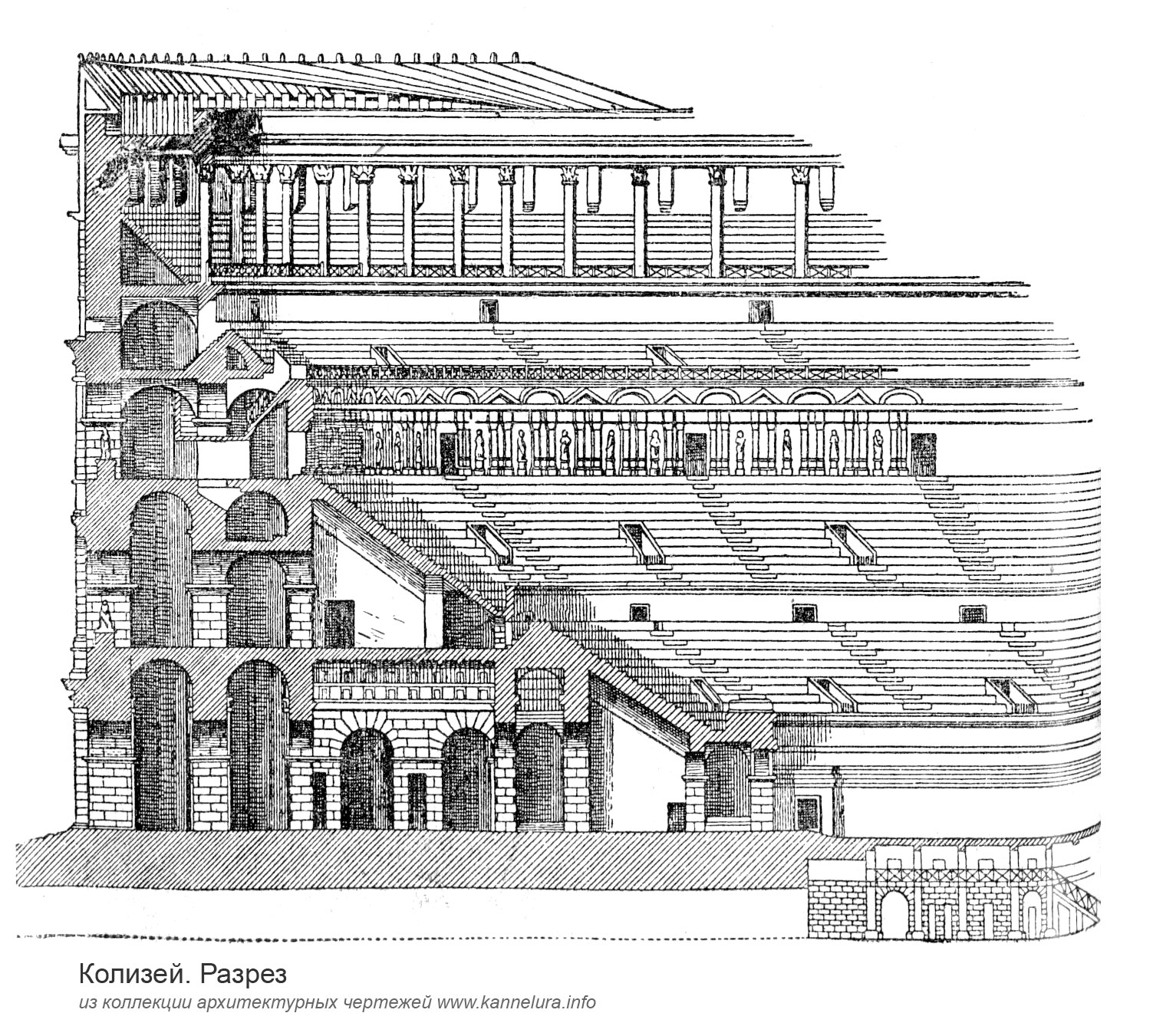
The Colosseum was built from concrete and brick, faced with travertine – a type of limestone. Its architecture was characterized by clear symmetry and rational construction, typical of Roman architecture.
The amphitheater had four tiers, adorned with arches, columns, and sculptures. Underground chambers were located inside, where gladiators and animals were brought through a complex system of elevators and hatches.
Decline and Restoration
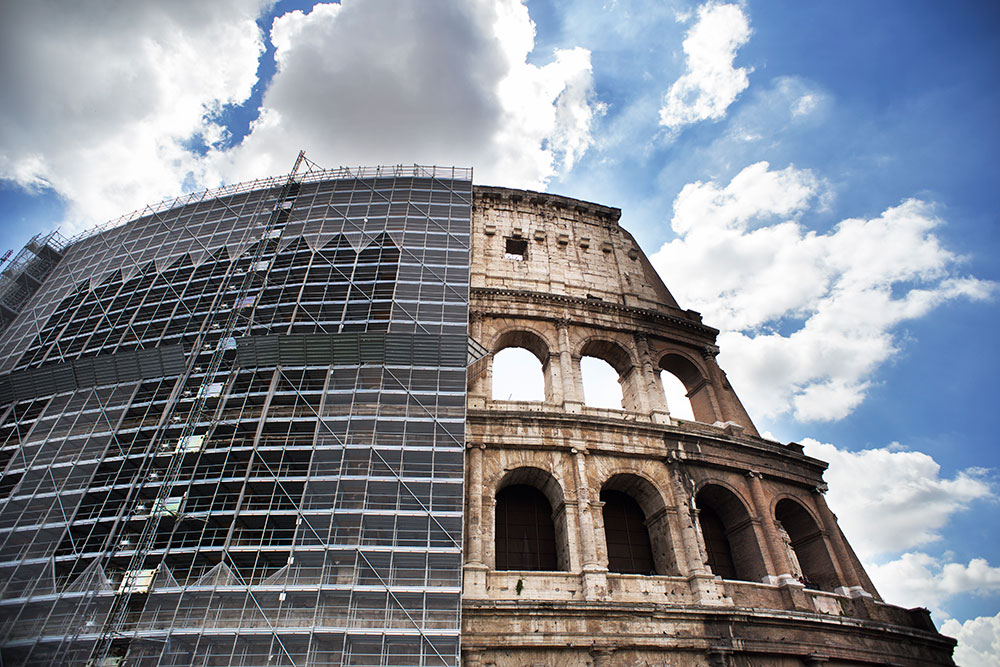
In the Middle Ages, after the fall of the Roman Empire, the Colosseum gradually fell into decay. It was used as a fortress, housing, and quarry. By the 19th century, the monument was in a deplorable state.
It was not until the mid-19th century, under the initiative of Pope Pius VII, that conservation and restoration work on the Colosseum began. These efforts continued for many decades, and today tourists can see the Colosseum in all its glory.
Contemporary State and Value
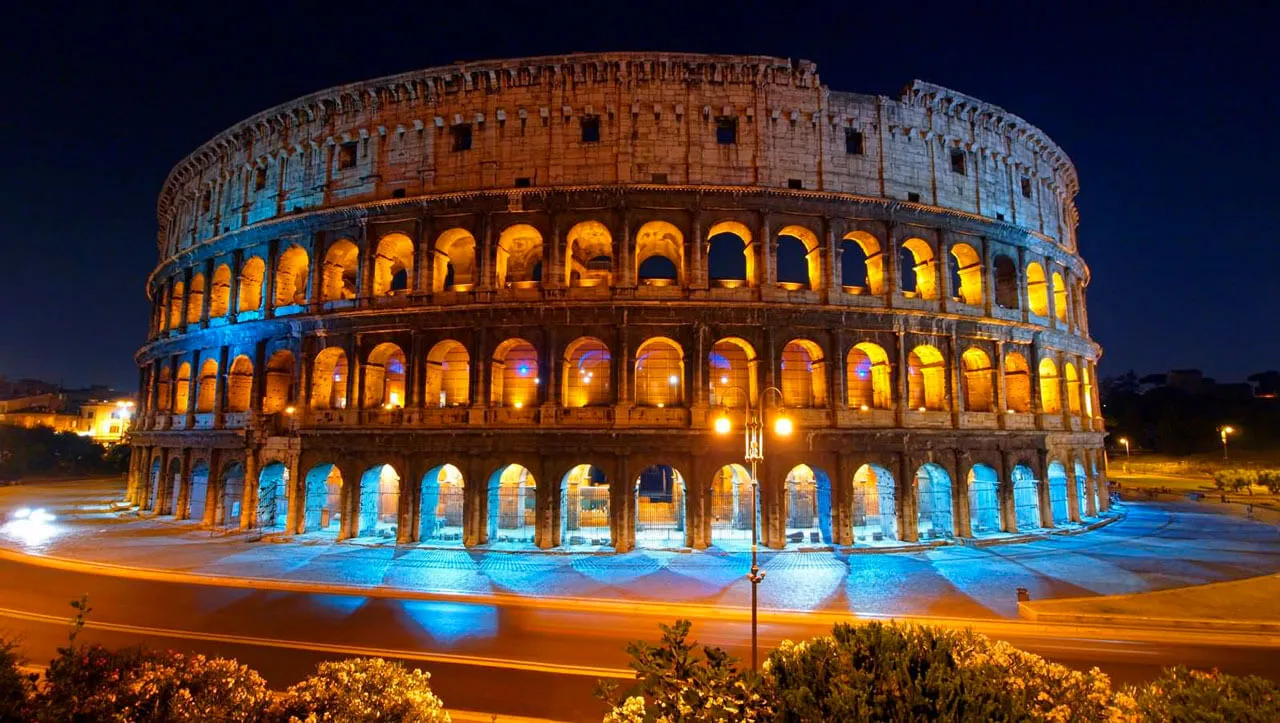
Today, the Colosseum is one of the main tourist attractions in Rome. Millions of tourists from all over the world visit it every year. Additionally, concerts and other mass events are periodically held in its arena.
The Colosseum is not just an impressive architectural structure but also a valuable historical monument that tells about the life, culture, and entertainment of Ancient Rome. Its grandeur and beauty consistently amaze viewers, and the history of its construction and the events that unfolded in its arena spark genuine interest.
Conclusion
The Colosseum in Rome is a true masterpiece of ancient Roman architecture, having become a symbol of the power and greatness of a once-great civilization. Having survived a turbulent history of destruction and rebirth, it continues to inspire awe and admiration in millions of people around the world.
